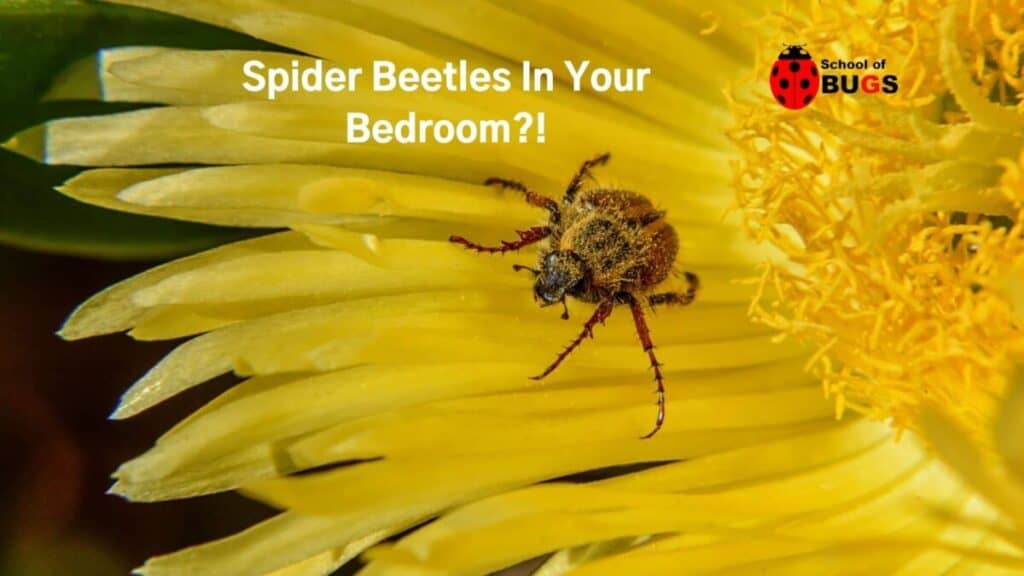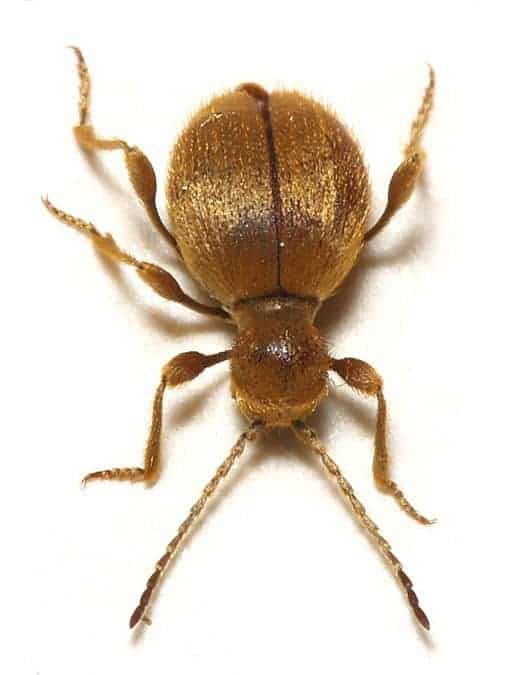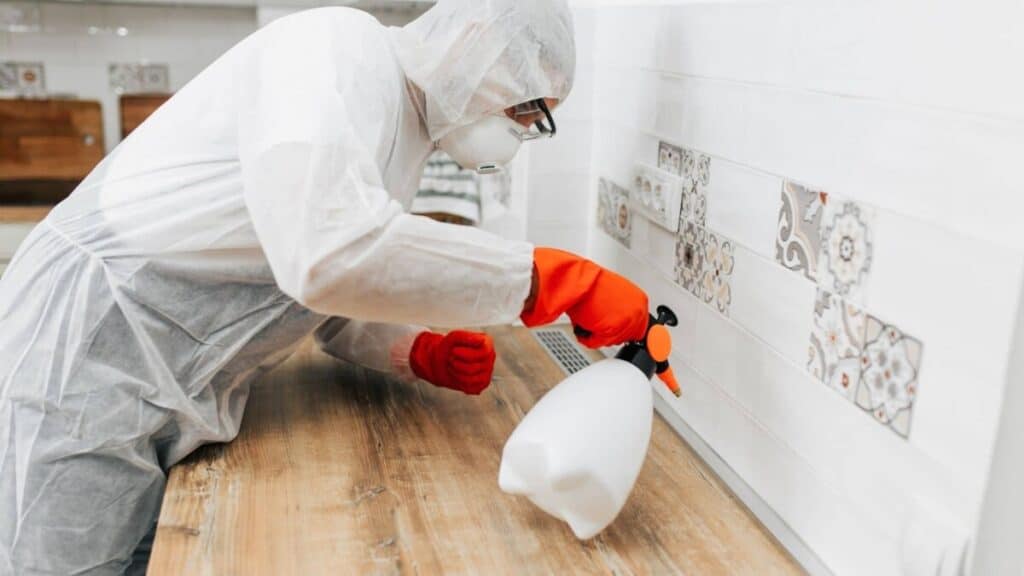
Formerly of the family Anobiinae, the 70 genera and 600 subfamilies that make up the spider beetles have now been classified as the Ptininae family.
As a large number of subfamilies suggest, there is a lot of variation among spider beetles that are found in different parts of the world.
For example, some 70 subfamilies among Ptininae are found in the US and Canada – the American Spider Beetle (Mezium Americanum) being the main one, with the Whitemarked spider beetles and the Smooth spider beetles also being found.
On the other hand, the species found in the UK and Europe are generally the Australian Spider Beetle, which came over around 1900 and has now spread everywhere.
These various species share certain characteristics that have earned them their name.
Do They Really Look Like a Spider?
Usually dark brown in color, both indoor and outdoor spider beetles have round bodies with a shiny carapace, and six long, slender legs.
In addition, they have two elongated antennae that protrude from their heads. The antennae help the spider beetles forage for food.
All in all, the shape of the body, the hard outer shells, and the (seemingly) eight legs do give these beetles a spider-like appearance, as seen below.

The shape of spider beetles may be a bit easier to spot than, say, flour beetles. They can be up to 1/5 inches in length, whereas the red flour beetle typically maxes out at about 1/8 of an inch.
Most spider beetles tend to be flightless.
What Do Spider Beetles Eat?
Spider battles eat a wide variety of foodstuff and can be found nesting in many environments – from the more common wheat, flour, and rye bread to varieties of seeds, fruits, almonds, dried mushrooms, beans, and figs.
This makes them natural foragers around storage sites, pantries, kitchens, and even outdoors. They are most active at night.

In addition to the list of normal foods above, spider beetles eat several things found around the house, which in turn can make them comfortable in the bedroom and living areas.
How do Spider Beetles End Up in the Bedroom?
Spider beetles can thrive on cereal, books, silk, wool and cacao – supplies of which are often found in human bedrooms.
They are even to chew through the foliage of house plants, infest herbariums or terrariums, or attack spice supplies.
They can also feed on taxidermized animals. They will chew through your shoes if nothing else happens to be available.
Since they are nocturnal, spider beetles often live on floorboards and can survive on flecks of animal skins and even bat droppings.
This makes the attic an especially comfortable place for them. Even otherwise, they will live in cracks, floors, and cupboards and their habit of staying away during the day makes them difficult to spot before a large infestation is on hand.
The Bedroom can be a Comfy Spot for Them
Though most of the species do not fly, spider beetles relentlessly forage for food. That’s the main reason they come inside the house to start with.

While the pantry could be the main target, it’s often a short distance to the bedroom – and unlike many other beetles, there are plenty of goodies for them to chomp on.
Spider beetles love moisture, so humid spots inside the house are prime venues for them to live and propagate – two to three generations can occur in a year (learn more).
The warmth and humidity (e.g. sweat) they find in human bodies could also entice them.
If they end up in the bed, spider beetles can be mistaken for bed bugs, since they have a similarly shaped bodies.
Once they get used to chomping on linen and silk, there are plenty of cracks and crevices for them to hide during the day.
Luckily, They Don’t Bite
The damage spider beetles normally do will be to foodstuff, furnishings, silks, linens, plants, even shoes, and the like.
They have the capability of chewing and boring through outside casings if they are searching for food.
Unlike bed bugs, spider beetles are not blood feeders and usually do not bite, a trait they share with many of the other storage pest beetles (see the list here).
There is, however, a very slim chance that they cannot find organic or other material and could attack humans.
If you are being bitten by spider beetles, its best to contact an exterminator immediately – it would signal a major infestation.

How to Control Spider Beetles
There are some general principles regarding how to control beetle infestations in your bedroom and home (learn about them here).
As in other cases, chemical pesticides are not a good idea. Cleaning and dehumidifying are good measures in general.
Alright, that’s it for this article, here are a few hand-selected articles that you might also find interesting reads:
I’ve Seen One Beetle Should I Be Worried?Why Am I Finding Beetles In My House?
Bugs in Kitchen at Night, Should I Be Worried?
Recent Posts
Tiny Black Bugs in Bathroom NO WINGS: What They Are and What to Do!
Finding tiny black bugs in your bathroom can be uncomfortable, to say the least. Especially if they are persistent, or they appear in very large numbers, which they often like to do. When it...
Tiny Black Bugs in Plant Soil - What Are They & What To Do About It
A short horror story: You get a new houseplant. You do your best to take care of it. You’ve ensured that it has the right soil, the right amount of sun, it gets enough water. And then one day, you...

